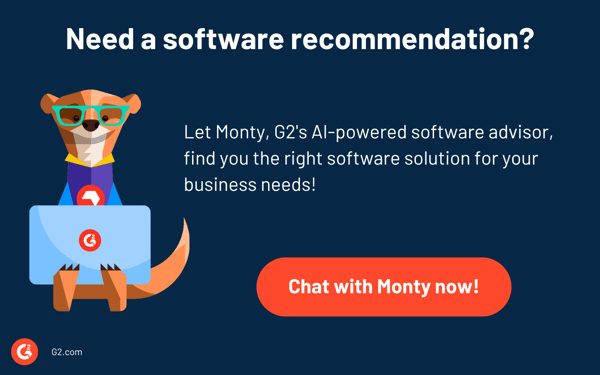January 22, 2024
 by Holly Landis / January 22, 2024
by Holly Landis / January 22, 2024

A new employee has joined your company – hurrah! You spent weeks or longer looking for the perfect new team member, and you’ve finally found them.
They’ve done their part to impress you with their skills and experience, but now the tables have turned. It’s on you to make their first few days and weeks a success, and ensure they have everything they need to do their job by introducing them to their coworkers and helping them integrate into the company culture.
A comprehensive onboarding process should do just that. By putting together an onboarding checklist, you can stay organized and prevent your new employee from feeling overwhelmed as they settle in.
An onboarding checklist is a document that managers use to guide new employees through their first weeks and months at a company. The list ensures that every step of the onboarding process is complete, that those responsible for each stage know what to do, and that the new team member has everything they need to perform their job.
Because there’s so much to keep track of, especially if several people start work at the same time, many businesses use onboarding software to simplify the administrative tasks that hiring managers need completed. In some cases, you can send paperwork to the new employee via the software ahead of their first day, speeding up the training process.
The goal of a successful onboarding process is to help a new team member integrate into the company as quickly as possible to become an effective contributor like the rest of the staff. This process can take up to a year, but over half of businesses in the US spend a single week onboarding their new hires.
Several key benefits come from a structured onboarding process, many of which result in happier employees who are more likely to stay with the business.
A good onboarding checklist should have general training information that any employee can benefit from, along with specialized tasks that relate to specific departments or job roles.
With training provided from their first day, employees often feel more engaged and able to contribute to the team more quickly than if they’d had little or no training. This kind of sentiment can lead to a 56% improvement in job performance, especially when skills-based training is combined with company culture orientation and ongoing check-ins. You can use the best corporate LMS software to help you with employee training and development.
Hiring is a costly process, so it’s vital that the new staff you bring in stay with the company for as long as possible. Not only does this save on having to start the recruitment process again, having a low employee turnover rate also maximizes the outgoings already spent on hiring that individual.
The risk of an employee leaving is at its highest during their first few months at a company. While this may seem strange given that they’ve successfully made it through the recruitment process, it’s also easy for employees to become overwhelmed and unsupported in an unfamiliar environment. Onboarding gives these team members everything they
Word travels quickly, especially in small and well-connected industry circles. When new employees have a good onboarding experience and subsequently choose to stay with a company, future applicants to your business will hear about it. The reputation of the business in the eyes of the outside world will be improved, and you’ll see more competitive candidates coming forward for your next job opening.
If you’re creating an onboarding checklist for the first time, think about which essentials employees need to know. Break the checklist down into time blocks, from their first day to the end of their first year.
Once someone accepts, let your HR team know so they can begin processing the necessary paperwork. They can complete a lot of this ahead of the first day if you keep them informed about new hires.
The IT team should also be aware that someone new is joining the company so new employees have access to the devices and accounts they’ll use.
If you have any company swag like branded mugs, t-shirts, or other fun items, now is a good time to put a few things together in a welcome package.
Most of the information you give to your new hires in their first few days is standard administrative paperwork and introductions. Make sure the first week includes:
Trying to relay everything to your new employees during the first week poses a few challenges. The hires likely feel a bit inundated with all their new information. Consider moving non-essentials to the second or third week when they’re starting to find their feet.
You still have to cover most of this information, but it doesn’t need to be prioritized upfront.
Formalized onboarding slows down in the second half of the first year as the new teammates become integrated members of staff. . But don’t forget about them! Make sure they’re aware of how to contact relevant departments with questions or concerns, while also giving them freedom to adapt and make the role their own as they get their bearings.
Once you’ve mapped out the key pieces of your onboarding checklist, run these steps by the stakeholders involved in employee onboarding.
HR, IT, and managers of every department should have a chance to review the onboarding checklist to provide feedback about anything missing. They can also draw inspiration from the general onboarding checklist to create their own plans that relate to their department and incorporate training only those team members need.
When everyone is happy with the final version of the onboarding checklist, add it to the project management software you use. Remember that the checklist should be a living document, so use any feedback you receive from new hires to update the template as needed.
The goal of employee onboarding software is to ease new hires into their roles, simplifying paperwork and onboarding tasks for hiring managers.
To be included in the onboarding software category, platforms must:
Below are the top 5 leading onboarding software platforms from G2’s Winter 2024 Grid® Report. Some reviews may be edited for clarity.
Paylocity is an all-in-one platform that helps HR professionals take care of their daily tasks like payroll, talent management, and benefits. The tool makes communication between teams and individuals simpler, both during onboarding and throughout the employees’ time working in the company.
“Onboarding new employees is simplified and reduces the amount of work required for hiring managers or HR by allowing the candidate to input all relevant information.”
- Paylocity Review, Sharon K.
“Customer service is not always the best. It helps to have a knowledgeable account manager who can guide you through changes, updates, etc. The survey section needs to be enhanced because it does not tally the survey up for you. The performance management section can also use some improvements.”
- Paylocity Review, Julie Y.
With BambooHR, teams automate essential HR functions like payroll, scheduling, and benefits management through the onboarding process and beyond.
“The product layout is user-friendly, and they have an excellent knowledge base with step-by-step instructions and videos. Their team provided one-on-one support for the first payroll, which made the process less daunting."
- BambooHR Review, Kim W.
“The main downside at the moment is the analytics capability is weak so you need to extract data and do a lot of the analysis yourself. I also haven't been able to see any proof of AI capabilities and I haven't found an AI roadmap for the platform.”
- BambooHR Review, Björn L.
HiBob HRIS is an HR software that alleviates the stress of people management for onsite, remote, and hybrid teams. You can oversee onboarding, performance management, and compensation management from HiBob’s single platform.
“The user-friendly interface ensures easy navigation for employees, establishing the platform as our primary source of truth. Its standout feature lies in the extensive automation options, allowing HR and managers to monitor various processes concurrently. We find it particularly convenient for daily use, and implementing new solutions is a breeze. The integrations with Slack, Jira, and Greenhouse further enhance efficiency, significantly simplifying our workflows.”
- HiBob HRIS Review, Monika L.
“Some processes are quite manager-centric (for example, 1:1s - although I think that is changing soon). Sometimes we want to issue tasks prior to final approval and the flows cannot manage this, so this has to be done manually.”
- HiBob HRIS Review, Christie B.
Gusto is an HR system for new or scaling businesses. They can rely on Gusto for tasks like payroll, compensation, and benefits.
“The system only took a day to figure out. Customer support is very easily accessed. It was easy to implement the system compared to most others. I use it at least once a week and my team updates it several times a week. I like that there are a variety of features. It is really easy to integrate with taxes, unemployment, registering W2, and 1099 employees.”
- Gusto Review, Neil C.
“Entering historical payroll information can be tricky and you can't correct it yourself if you find you've made a mistake after you've submitted the information. You have to contact support and have Gusto make the correction.”
- Gusto Review, Cindy F.
Run by ADP is an HR software and payroll processor that automates compensation benefits, calculates tax deductions, manages employee handbooks, and posts open positions at the business online.
“I love that it's so easy to use – I run businesses in multiple states and ADP takes care of all the taxes, unemployment, etc., so I never miss an important date. I can also run reports at any time, update employee information, or allow them to do so, and post jobs on ZipRecruiter when in need. I have our retirement plan set up through ADP and also workers comp –so many things that need to be taken care of are all taken care of in one place!”
- Run by ADP Review, Erika H.
“Time clock features can error sometimes; there are times that people have issues clocking in and out of the application.”
- Run by ADP Review, Brandy T.

As new team members join your business, give them your best first impression. By building and reviewing your onboarding checklist, you welcome your new employees into the fold so they feel valued from day one.
Hire the best people in your field by creating a formalized recruitment marketing strategy that works across every department.
Holly Landis is a freelance writer for G2. She also specializes in being a digital marketing consultant, focusing in on-page SEO, copy, and content writing. She works with SMEs and creative businesses that want to be more intentional with their digital strategies and grow organically on channels they own. As a Brit now living in the USA, you'll usually find her drinking copious amounts of tea in her cherished Anne Boleyn mug while watching endless reruns of Parks and Rec.
I recently celebrated my second anniversary at G2, and it got me thinking back to my first few...
 by Harshita Tewari
by Harshita Tewari
Employee onboarding looks different depending on what stage of the employee experience you’re...
 by Lauren Pope
by Lauren Pope
First impressions are everything — and the workplace is no exception.
 by Cameron Nouri
by Cameron Nouri
I recently celebrated my second anniversary at G2, and it got me thinking back to my first few...
 by Harshita Tewari
by Harshita Tewari
Employee onboarding looks different depending on what stage of the employee experience you’re...
 by Lauren Pope
by Lauren Pope


